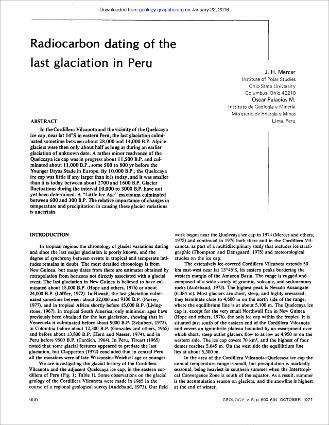Please use this identifier to cite or link to this item:
https://hdl.handle.net/20.500.12544/2873Files in This Item:
| File | Description | Size | Format | |
|---|---|---|---|---|
| Mercer-Radiocarbon_dating_last_glaciation(Abstract).pdf | Resumen | 49.41 kB | Adobe PDF | View/Open |
| portada-Radiocarbon.jpg | 895.06 kB | JPEG | View/Open |
Items in DSpace are protected by copyright, with all rights reserved, unless otherwise indicated.











